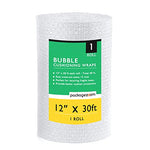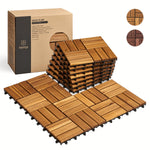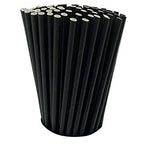You have no items in your shopping cart.
Are you ready to delve into the captivating universe of the Monstera Esqueleto? This remarkable plant, with its extraordinary skeletal foliage, is sure to leave you in awe. In this comprehensive guide, we will unveil the mysteries surrounding the Monstera Esqueleto, shedding light on its origins, care requirements, propagation techniques, and more. Whether you're a seasoned plant enthusiast or a novice green thumb, prepare to be enchanted by the peculiar charm of the Monstera Esqueleto.
Monstera Esqueleto: A Marvel of Nature
Unveiling the Beauty of Monstera Esqueleto
Imagine a plant that appears as though it was sculpted from delicate ivory bones. The Monstera Esqueleto, also known as the Skeleton Monstera, is a botanical masterpiece that stands out from the crowd. Its intricate leaves, resembling the delicate framework of a skeleton, make it an extraordinary addition to any indoor or outdoor space. This captivating plant is a true conversation starter, captivating the hearts of plant enthusiasts worldwide.
Origins and Discovery
The Monstera Esqueleto hails from the lush rainforests of Central and South America, where it thrives in the humid and tropical conditions. It belongs to the Araceae family, which includes other notable plants like the Monstera Deliciosa and Philodendron. While its exact origins remain somewhat of a mystery, it is believed that the Monstera Esqueleto was discovered in the depths of the Amazon rainforest, where its unique skeletal foliage set it apart from its leafier relatives.
Characteristics of Monstera Esqueleto
The Monstera Esqueleto boasts several distinct characteristics that make it a stand-out specimen among its botanical peers. Here are some notable features of this intriguing plant:
- Leaf Structure: The leaves of the Monstera Esqueleto exhibit an enchanting skeletal-like pattern, with intricately interconnected veins that resemble bones.
- Leaf Size: The size of the leaves can vary, ranging from small to medium, depending on the age and maturity of the plant.
- Leaf Color: Initially, the leaves emerge as vibrant green, gradually transitioning to a darker shade as they mature. Some varieties may display variegated patterns, adding a touch of whimsy to their allure.
- Growth Habit: Monstera Esqueleto is a climbing vine that can reach impressive heights if provided with adequate support. It showcases aerial roots that help it latch onto surfaces and climb effortlessly.
- Inflorescence: Although rare, the Monstera Esqueleto occasionally produces an inflorescence composed of small white flowers. However, it is primarily cultivated for its striking foliage rather than its blooms.
How to Care for Monstera Esqueleto
To ensure the optimal health and vitality of your Monstera Esqueleto, it is crucial to provide it with suitable care. Let's explore the essential aspects of nurturing this remarkable plant.
Light Requirements
Monstera Esqueleto thrives in bright, indirect light. It appreciates being near a window where it can receive filtered sunlight, as direct exposure to intense rays can scorch its delicate leaves. Finding the right balance between light and shade is key to maintaining the health and vibrancy of your Monstera Esqueleto.
Watering Needs
Like most tropical plants, the Monstera Esqueleto enjoys moderate levels of moisture. It's important to allow the top inch or so of the soil to dry out between waterings to prevent overwatering, which can lead to root rot. However, it's equally crucial to avoid letting the soil dry out completely, as this can cause stress and leaf damage. Regularly check the moisture level of the soil and adjust your watering schedule accordingly.
Humidity and Temperature
Being native to tropical rainforests, the Monstera Esqueleto thrives in high humidity environments. To replicate its natural habitat, consider using a humidifier or placing a water-filled tray near the plant to maintain adequate moisture levels. In terms of temperature, the Monstera Esqueleto prefers a warm and humid climate, ideally between 65°F and 85°F (18°C and 29°C). Avoid exposing the plant to drafts or extreme temperature fluctuations.
Soil and Fertilizer
Providing the Monstera Esqueleto with well-draining soil is crucial to prevent waterlogging and promote healthy root development. A rich, peat-based potting mix that retains moisture without becoming soggy is ideal. Additionally, regular fertilization during the growing season will help fuel its growth. Use a balanced liquid fertilizer diluted to half strength once every four to six weeks for optimal results.
Propagation Techniques for Monstera Esqueleto
Propagating the Monstera Esqueleto can be an exciting endeavor for plant enthusiasts. Let's explore two popular propagation methods:
- Stem Cuttings: Select a healthy stem with at least one node, preferably with a few leaves attached. Make a clean cut just below the node and place the cutting in a jar of water or directly into a pot with moist soil. Ensure the node is submerged or buried in the soil, and keep the cutting in a warm and humid environment until roots form.
- Air Layering: Choose a healthy section of a mature stem and make a small incision just below a node. Apply rooting hormone to the incision and wrap it with moist sphagnum moss. Cover the moss with plastic wrap and secure it in place. After a few weeks, roots will start to develop. Once the roots are well-established, carefully remove the rooted section and plant it in a pot with well-draining soil.
By following these propagation techniques, you can expand your Monstera Esqueleto collection or share the joy of this unique plant with friends and fellow plant enthusiasts.
FAQs about Monstera Esqueleto
-
Q: Can I grow Monstera Esqueleto outdoors?
- A: While Monstera Esqueleto thrives in indoor environments, it can also be grown outdoors in suitable climates. Ensure it is protected from direct sunlight and harsh weather conditions.
-
Q: How often should I repot my Monstera Esqueleto?
- A: Repotting is typically necessary every one to two years, or when the plant outgrows its current container. Look for signs such as roots emerging from the drainage holes or excessive water retention to determine if repotting is needed.
-
Q: Is Monstera Esqueleto toxic to pets?
- A: Yes, Monstera Esqueleto contains calcium oxalate crystals, which can cause mild to moderate irritation if ingested by pets. Keep it out of reach of curious four-legged friends.
-
Q: How do I promote fuller growth in my Monstera Esqueleto?
- A: To encourage bushier growth, pinch or prune the stems regularly. This will stimulate branching and result in a fuller, more compact plant.
-
Q: Why are the leaves of my Monstera Esqueleto turning yellow?
- A: Yellowing leaves can indicate overwatering, underwatering, or nutrient deficiencies. Assess your watering habits, adjust as needed, and consider fertilizing to address any nutrient imbalances.
-
Q: Can I train my Monstera Esqueleto to climb a moss pole or trellis?
- A: Absolutely! Monstera Esqueleto responds well to climbing structures. By providing a moss pole or trellis, you can guide its growth and create an impressive vertical display.
Conclusion
The Monstera Esqueleto truly is a botanical wonder that captivates with its stunning skeletal foliage. With its unique beauty and intriguing growth habits, it has become a sought-after plant for enthusiasts worldwide. By understanding its origins, providing the right care, and exploring propagation methods, you can cultivate a thriving Monstera Esqueleto collection of your own. Embrace the allure of this extraordinary plant and embark on a botanical adventure like no other.








